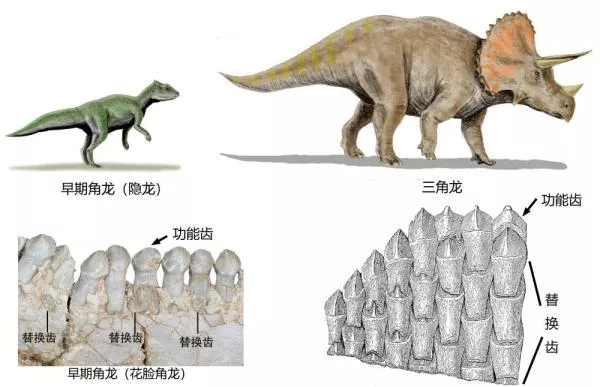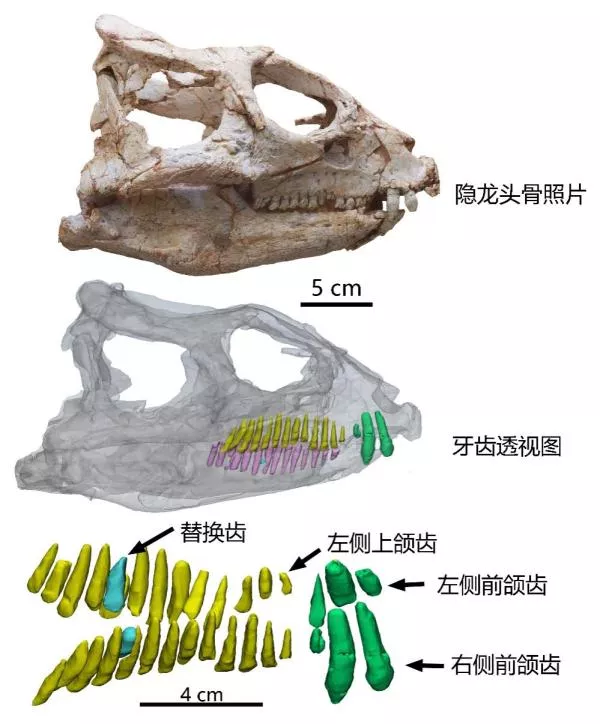Mammals (including humans) only change their teeth once in a lifetime. How did dinosaurs change their teeth hundreds of millions of years ago? The reporter learned from China University of Geosciences (Wuhan) that the research team of Han Fenglu, associate professor of the school of Geosciences of the University, in conjunction with Chinese and foreign researchers, studied the tooth morphology and replacement characteristics of early horned dragons, and revealed the way of tooth replacement of early horned dragons** The relevant research results have recently been published online in the international biological journal electronic life.

Restoration of early Horned Dragon (left) and Triceratops (right) and comparison of mandibular tooth morphology. (picture provided by the interviewee)
It is famous for its unique shape and more than 800 teeth in the late Cretaceous. Their teeth are replaced all their lives and have a fast replacement rate. It takes only about three months to change their teeth once. However, the ancestral group of Triceratops lacked this complex tooth system.
Han Fenglu told reporters that in order to study the tooth replacement of early horned dragons, researchers carried out micro CT scanning on the skulls and teeth of three early horned dragons mainly living in the Jurassic, and observed the development of functional teeth and replacement teeth by reconstructing the 3D model of teeth.

Perspective view of skull, teeth and reconstruction of maxillary teeth of early Horned Dragon cryptosaurus Dangshi. (picture provided by the interviewee)
The researchers found that early horned dragons had very different dental characteristics from Triceratops: early horned dragons had very few replacement teeth, indicating that early horned dragons changed teeth much more slowly than later Triceratops. The position of the new teeth of early horned dragons is also different from that of Triceratops. The new teeth of Triceratops grow from the bottom of the old teeth, while the new teeth of early horned dragons grow from the inside of the old teeth.
Why are the tooth systems of early horned dragons and Triceratops so different? Han Fenglu believes that the early Horned Dragon was small. For example, the body length of Dang's hidden dragon was only about 1.2 meters, while the body length of Triceratops was about 9 meters. The increase in body size led to the greater demand for food and higher requirements for teeth.
"Triceratops have complex tooth morphology, which enables them to chew food fully in the mouth. However, the early horned dragons have simple tooth morphology and may only have simple cutting plant function. The difference of function also leads to the difference of tooth system between the two." Han Fenglu added that stomach stones were also found in cryptosaurus Dangshi and another early horned parrot billed dragon, indicating that they are likely to swallow small stones into their stomach like modern birds to assist digestion, making their teeth bear less pressure and wear more slowly.
Author: Li Wei source: Xinhuanet